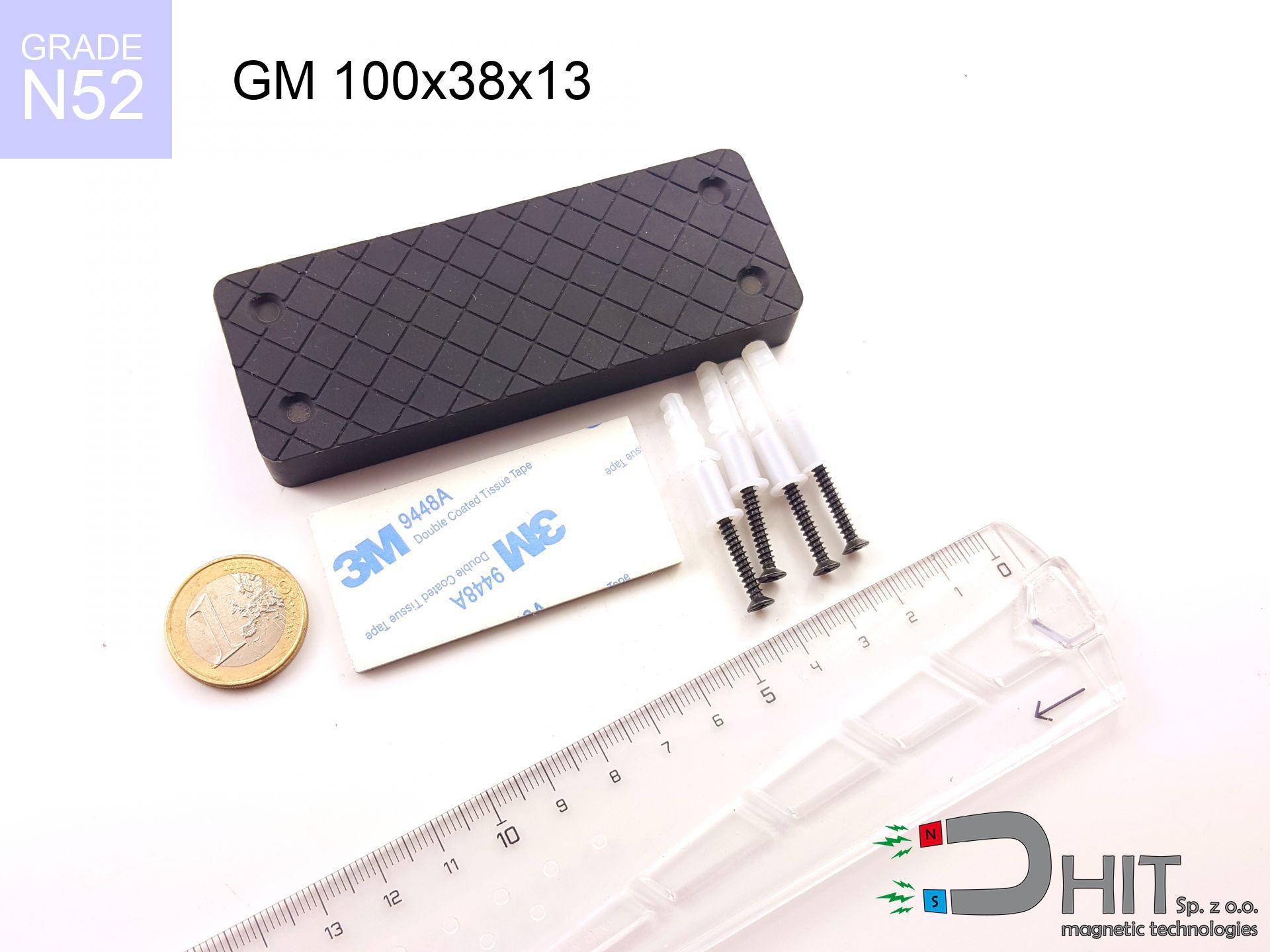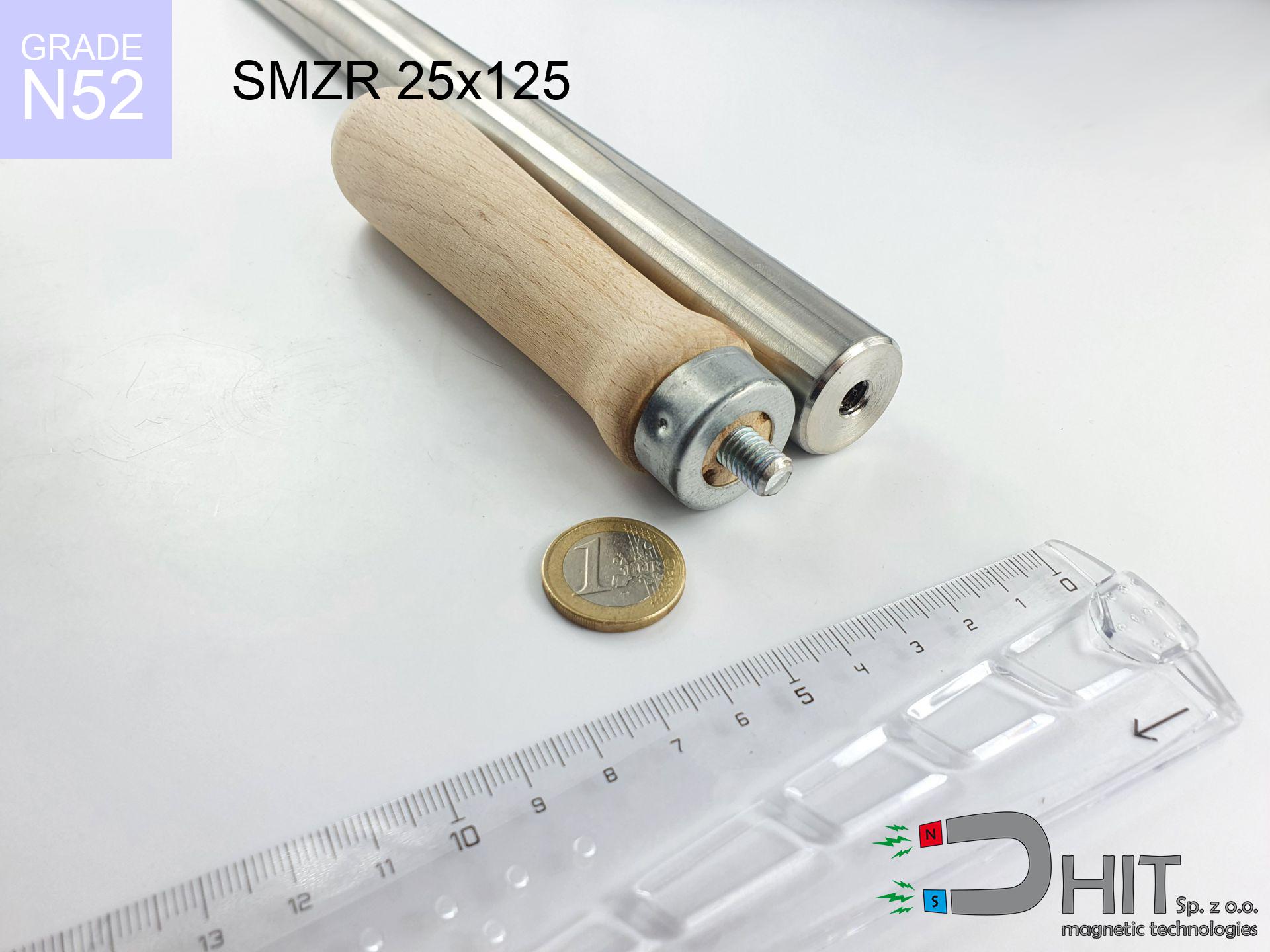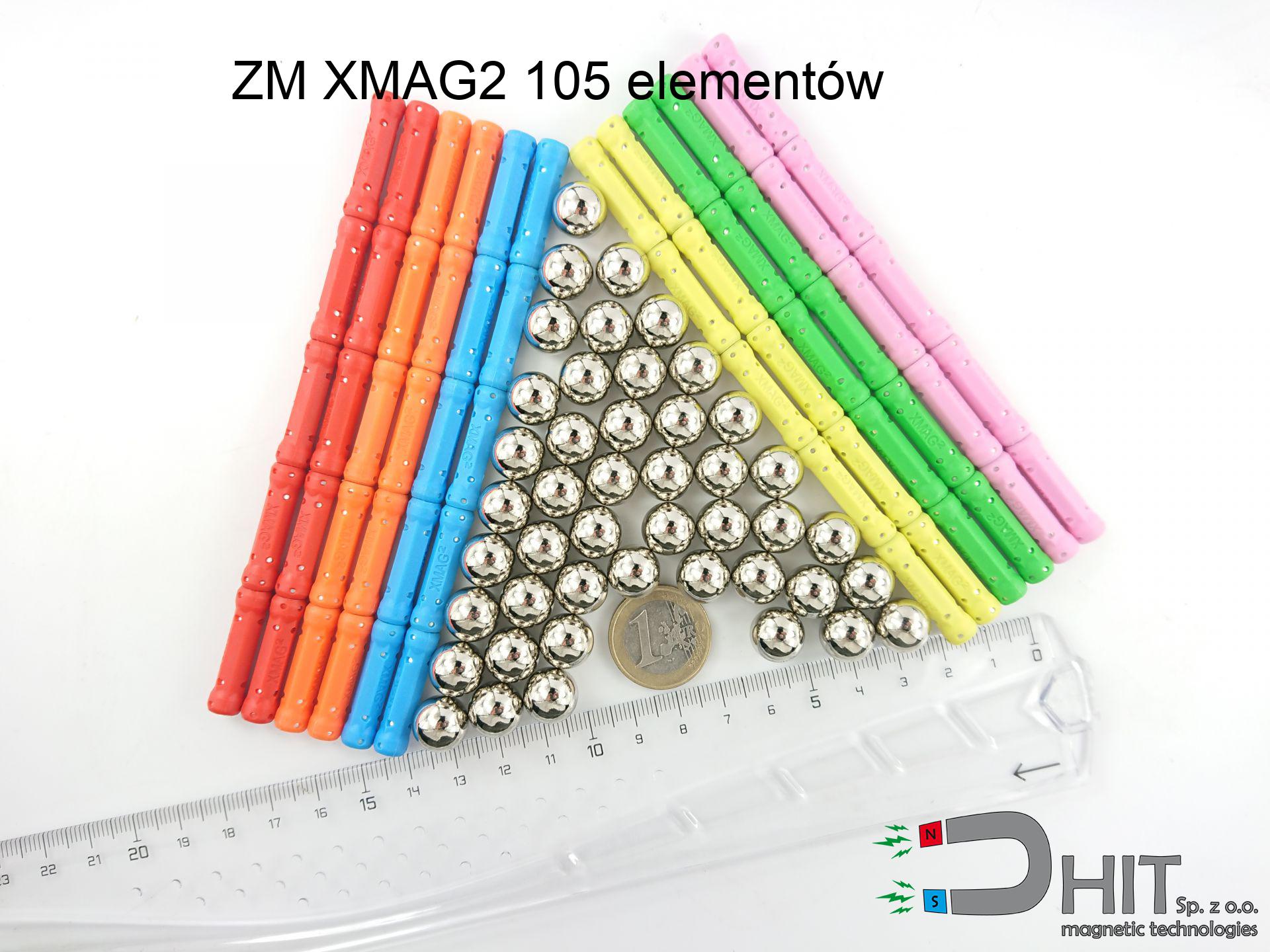SM 32x450 [2xM8] / N52 - magnetic separator
magnetic separator
Catalog no 130465
GTIN/EAN: 5906301813361
Diameter Ø
32 mm [±1 mm]
Height
450 mm [±1 mm]
Weight
2490 g
Magnetic Flux
~ 10 000 Gauss [±5%]
1414.50 ZŁ with VAT / pcs + price for transport
1150.00 ZŁ net + 23% VAT / pcs
bulk discounts:
Need more?
Contact us by phone
+48 22 499 98 98
otherwise let us know using
our online form
the contact section.
Specifications as well as form of magnets can be reviewed using our
magnetic calculator.
Same-day shipping for orders placed before 14:00.
Physical properties - SM 32x450 [2xM8] / N52 - magnetic separator
Specification / characteristics - SM 32x450 [2xM8] / N52 - magnetic separator
| properties | values |
|---|---|
| Cat. no. | 130465 |
| GTIN/EAN | 5906301813361 |
| Production/Distribution | Dhit sp. z o.o. |
| Country of origin | Poland / China / Germany |
| Customs code | 85059029 |
| Diameter Ø | 32 mm [±1 mm] |
| Height | 450 mm [±1 mm] |
| Weight | 2490 g |
| Material Type | Stainless steel AISI 304 / A2 |
| Magnetic Flux | ~ 10 000 Gauss [±5%] |
| Size/Mount Quantity | 2xM8 |
| Polarity | circumferential - 17 poles |
| Casing Tube Thickness | 1 mm |
| Manufacturing Tolerance | ±1 mm |
Magnetic properties of material N52
| properties | values | units |
|---|---|---|
| remenance Br [min. - max.] ? | 14.2-14.7 | kGs |
| remenance Br [min. - max.] ? | 1420-1470 | mT |
| coercivity bHc ? | 10.8-12.5 | kOe |
| coercivity bHc ? | 860-995 | kA/m |
| actual internal force iHc | ≥ 12 | kOe |
| actual internal force iHc | ≥ 955 | kA/m |
| energy density [min. - max.] ? | 48-53 | BH max MGOe |
| energy density [min. - max.] ? | 380-422 | BH max KJ/m |
| max. temperature ? | ≤ 80 | °C |
Physical properties of sintered neodymium magnets Nd2Fe14B at 20°C
| properties | values | units |
|---|---|---|
| Vickers hardness | ≥550 | Hv |
| Density | ≥7.4 | g/cm3 |
| Curie Temperature TC | 312 - 380 | °C |
| Curie Temperature TF | 593 - 716 | °F |
| Specific resistance | 150 | μΩ⋅cm |
| Bending strength | 250 | MPa |
| Compressive strength | 1000~1100 | MPa |
| Thermal expansion parallel (∥) to orientation (M) | (3-4) x 10-6 | °C-1 |
| Thermal expansion perpendicular (⊥) to orientation (M) | -(1-3) x 10-6 | °C-1 |
| Young's modulus | 1.7 x 104 | kg/mm² |
Table 1: Rod construction
SM 32x450 [2xM8] / N52
| Parameter | Value | Description / Unit |
|---|---|---|
| Diameter (Ø) | 32 | mm |
| Total length | 450 | mm (L) |
| Active length | 414 | mm |
| Section count | 18 | modules |
| Dead zone | 36 | mm (2x 18mm starter) |
| Weight (est.) | ~2751 | g |
| Active area | 416 | cm² (Area) |
| Housing material | AISI 304 | 1.4301 (Inox) |
| Surface finish | Ra < 0.8 µm | Polished |
| Temp. class | 80°C | Standard (N) |
| Force loss (at max °C) | -12.8% | Reversible loss (physics) |
| Force (calculated) | 41 | kg (theor.) |
| Induction (surface) | ~10 000 | Gauss (Max) |
Chart 2: Field profile (18 sections)
Chart 3: Temperature performance
Elemental analysis
| iron (Fe) | 64% – 68% |
| neodymium (Nd) | 29% – 32% |
| boron (B) | 1.1% – 1.2% |
| dysprosium (Dy) | 0.5% – 2.0% |
| coating (Ni-Cu-Ni) | < 0.05% |
Ecology and recycling (GPSR)
| recyclability (EoL) | 100% |
| recycled raw materials | ~10% (pre-cons) |
| carbon footprint | low / zredukowany |
| waste code (EWC) | 16 02 16 |
Other deals
Strengths as well as weaknesses of neodymium magnets.
Advantages
- They have unchanged lifting capacity, and over more than 10 years their attraction force decreases symbolically – ~1% (in testing),
- They are resistant to demagnetization induced by external magnetic fields,
- A magnet with a metallic gold surface has better aesthetics,
- Magnetic induction on the working layer of the magnet is exceptional,
- Thanks to resistance to high temperature, they are able to function (depending on the form) even at temperatures up to 230°C and higher...
- Possibility of custom machining and adjusting to concrete needs,
- Wide application in high-tech industry – they are utilized in hard drives, motor assemblies, advanced medical instruments, as well as modern systems.
- Compactness – despite small sizes they generate large force, making them ideal for precision applications
Cons
- To avoid cracks upon strong impacts, we suggest using special steel housings. Such a solution secures the magnet and simultaneously increases its durability.
- Neodymium magnets lose force when exposed to high temperatures. After reaching 80°C, many of them experience permanent drop of strength (a factor is the shape as well as dimensions of the magnet). We offer magnets specially adapted to work at temperatures up to 230°C marked [AH], which are extremely resistant to heat
- Due to the susceptibility of magnets to corrosion in a humid environment, we recommend using waterproof magnets made of rubber, plastic or other material immune to moisture, in case of application outdoors
- We suggest casing - magnetic mount, due to difficulties in realizing threads inside the magnet and complex shapes.
- Health risk related to microscopic parts of magnets pose a threat, when accidentally swallowed, which gains importance in the context of child safety. Additionally, small components of these devices can complicate diagnosis medical after entering the body.
- Higher cost of purchase is one of the disadvantages compared to ceramic magnets, especially in budget applications
Holding force characteristics
Magnetic strength at its maximum – what affects it?
- with the application of a sheet made of special test steel, ensuring full magnetic saturation
- possessing a massiveness of at least 10 mm to ensure full flux closure
- with a plane perfectly flat
- with total lack of distance (without impurities)
- for force applied at a right angle (in the magnet axis)
- at room temperature
Practical lifting capacity: influencing factors
- Space between surfaces – every millimeter of separation (caused e.g. by varnish or unevenness) significantly weakens the pulling force, often by half at just 0.5 mm.
- Pull-off angle – note that the magnet has greatest strength perpendicularly. Under sliding down, the holding force drops drastically, often to levels of 20-30% of the maximum value.
- Element thickness – for full efficiency, the steel must be sufficiently thick. Paper-thin metal restricts the attraction force (the magnet "punches through" it).
- Material type – ideal substrate is pure iron steel. Cast iron may generate lower lifting capacity.
- Plate texture – ground elements guarantee perfect abutment, which increases field saturation. Rough surfaces reduce efficiency.
- Heat – neodymium magnets have a sensitivity to temperature. At higher temperatures they are weaker, and at low temperatures they can be stronger (up to a certain limit).
Holding force was measured on a smooth steel plate of 20 mm thickness, when the force acted perpendicularly, however under attempts to slide the magnet the load capacity is reduced by as much as 75%. Moreover, even a slight gap between the magnet and the plate lowers the lifting capacity.
Warnings
Product not for children
Only for adults. Tiny parts pose a choking risk, leading to serious injuries. Store away from kids and pets.
Respect the power
Before use, read the rules. Sudden snapping can destroy the magnet or hurt your hand. Be predictive.
Finger safety
Big blocks can crush fingers instantly. Do not put your hand betwixt two strong magnets.
Electronic devices
Device Safety: Neodymium magnets can ruin payment cards and delicate electronics (pacemakers, medical aids, timepieces).
Do not overheat magnets
Keep cool. Neodymium magnets are sensitive to temperature. If you require resistance above 80°C, look for special high-temperature series (H, SH, UH).
Health Danger
Patients with a heart stimulator should maintain an safe separation from magnets. The magnetic field can interfere with the functioning of the life-saving device.
Magnet fragility
Beware of splinters. Magnets can explode upon violent connection, ejecting sharp fragments into the air. Wear goggles.
Dust explosion hazard
Fire hazard: Neodymium dust is explosive. Do not process magnets in home conditions as this may cause fire.
Warning for allergy sufferers
Certain individuals have a contact allergy to nickel, which is the standard coating for NdFeB magnets. Frequent touching may cause skin redness. We strongly advise use safety gloves.
GPS and phone interference
A powerful magnetic field interferes with the functioning of compasses in phones and GPS navigation. Keep magnets close to a smartphone to prevent breaking the sensors.

![Separation magnetic rod SM 32x450 [2xM8] / N52 Separation magnetic rod SM 32x450 [2xM8] / N52](https://cdn3.dhit.pl/graphics/banners/magnet.webp)
![SM 32x450 [2xM8] / N52 - magnetic separator](https://cdn3.dhit.pl/graphics/products/sm-32x450-2xm8-bir.jpg)





